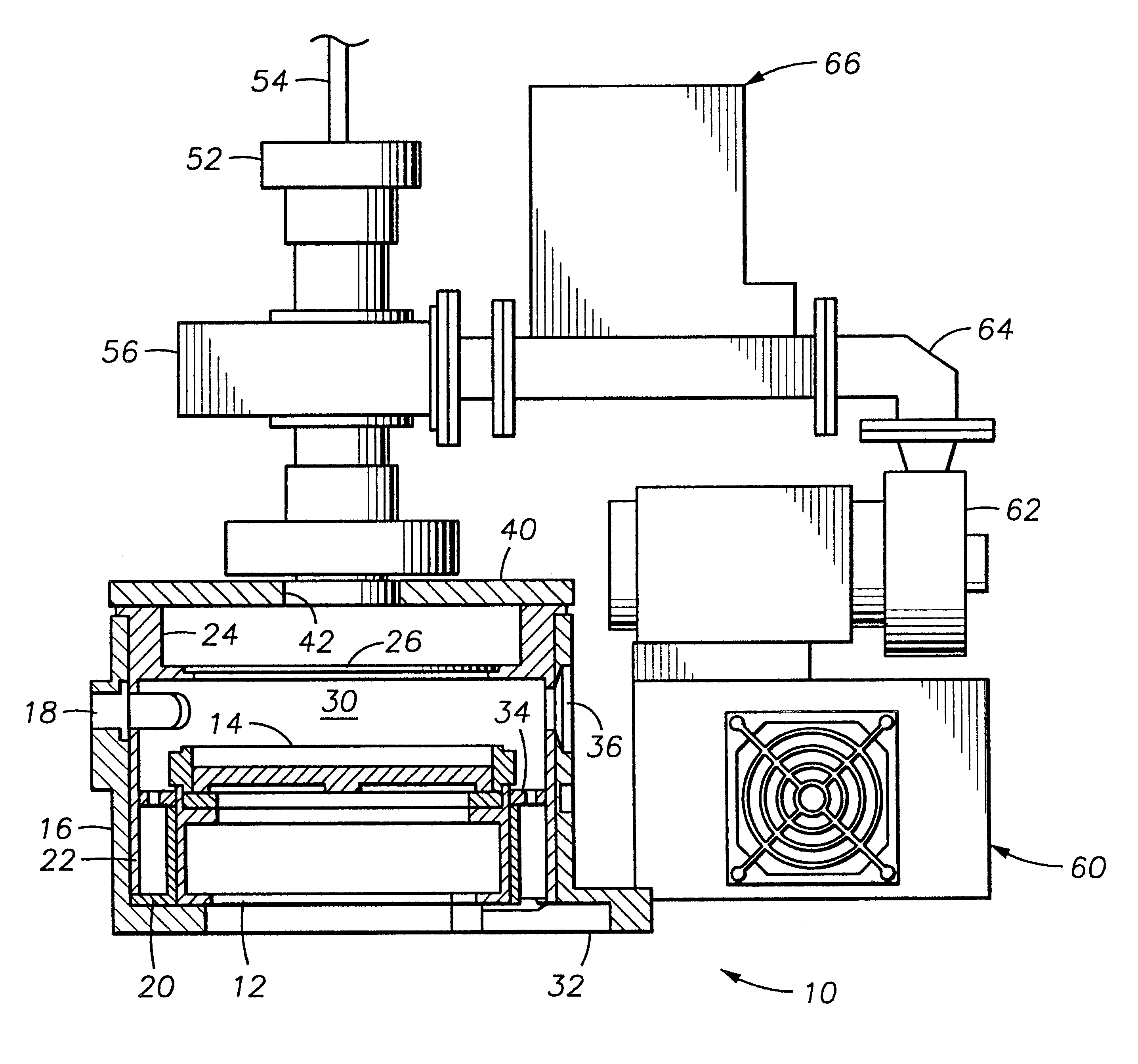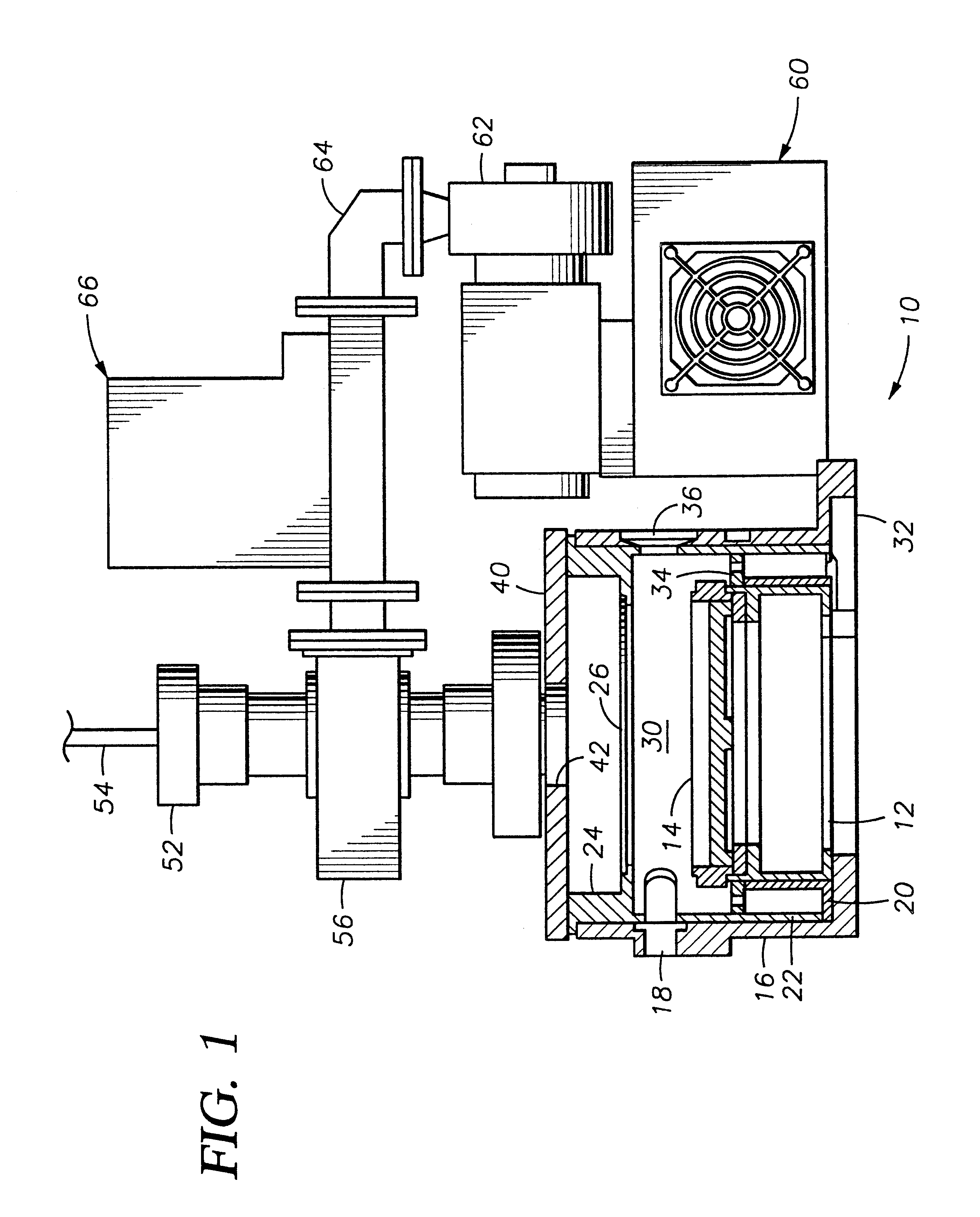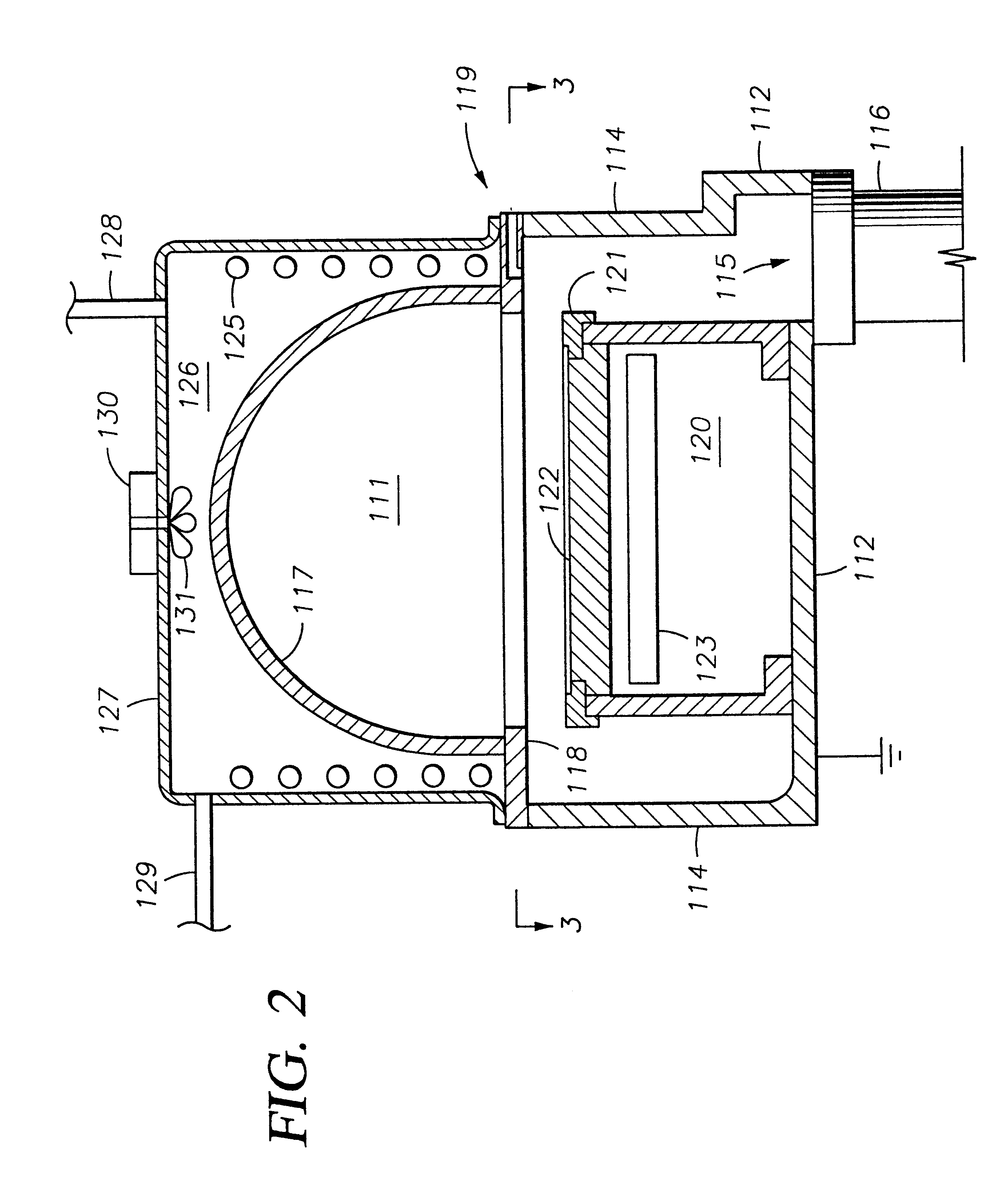Reactive preclean prior to metallization for sub-quarter micron application
a sub-quarter micron and pre-metallization technology, applied in the direction of vacuum evaporation coating, chemical vapor deposition coating, coating, etc., can solve the problems of void formation within the features, increased difficulty in cleaning the features, and large aspect ratio of features
- Summary
- Abstract
- Description
- Claims
- Application Information
AI Technical Summary
Benefits of technology
Problems solved by technology
Method used
Image
Examples
example
The precleaning steps of the present invention have been combined in the chamber shown in FIGS. 2-4 to successfully clean features etched in a dielectric layer having a copper sublayer prior to filling of the features with a Cu or Al plug. The chamber was stabilized for 5 seconds at a pressure of 5-20 mTorr with a mixture of 90% H.sub.2 and 10% He, Ar, or N.sub.2. The features were then cleaned for 60 seconds by applying 300 W of 400 KHz RF power to the coil and 10 W of RF power (13.56 MHZ) to the pedestal. These process conditions (i.e. with very low bias) can chemically reduce CuO without sputtering of the Cu sublayer onto the sidewalls. Similar treatment can also be used for Si or TiSi.sub.x sublayers at higher temperatures.
The precleaning process of this invention is conducted in the dedicated precleaning chamber as described above, or done in situ in the barrier layer chamber. The precleaning chamber is preferably integrated with other moralization p...
PUM
| Property | Measurement | Unit |
|---|---|---|
| pressure | aaaaa | aaaaa |
| microwave power | aaaaa | aaaaa |
| pressure | aaaaa | aaaaa |
Abstract
Description
Claims
Application Information
 Login to View More
Login to View More - R&D
- Intellectual Property
- Life Sciences
- Materials
- Tech Scout
- Unparalleled Data Quality
- Higher Quality Content
- 60% Fewer Hallucinations
Browse by: Latest US Patents, China's latest patents, Technical Efficacy Thesaurus, Application Domain, Technology Topic, Popular Technical Reports.
© 2025 PatSnap. All rights reserved.Legal|Privacy policy|Modern Slavery Act Transparency Statement|Sitemap|About US| Contact US: help@patsnap.com



